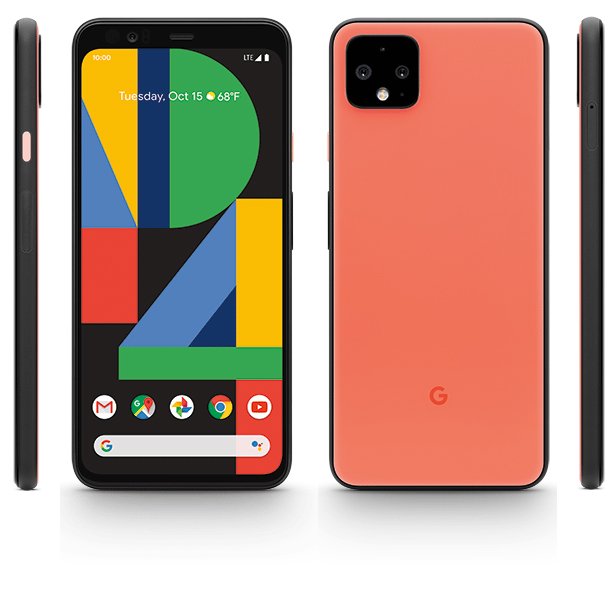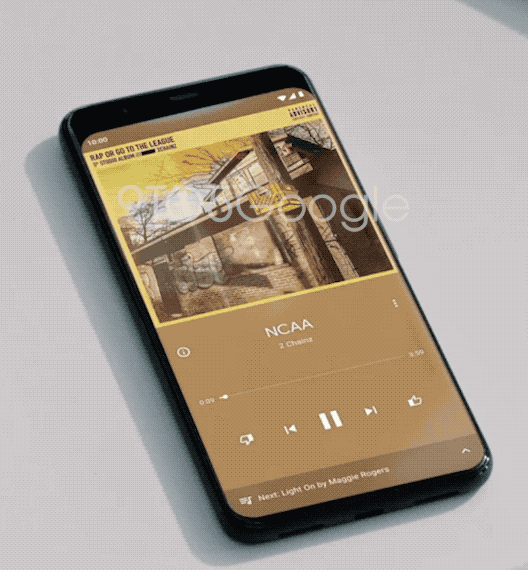Can the Pixel 4 Win? 4 Features Could Make the Difference
Here's how the Pixel 4 can stand out

Google's got a bit of a Pixel problem. The company has poured a lot of resources into building its own smartphones, and those efforts have paid off in the final product. Google's Pixel phones have a well-deserved reputation for offering superior cameras, and Android purists enjoy the clean OS and near-immediate access to software and security updates.
The trouble is, all those plaudits aren't translating into big sales for the Pixel.
As recently as April, Google was lamenting that the Pixel 3 wasn't selling as well as its predecessor. During the first half of 2019, market-research firm IDC estimated that Google enjoyed less than a 1% share of the global smartphone market, according to Ramon Llamas, IDC’s research director for mobile devices.
It wasn't until Google released the Pixel 3a and 3a XL, which offered many of the same photo features as the flagship Pixels but for a lower price, that consumers responded positively. That was good for Google's bottom line, but hardly an encouraging sign that the company can build a premium phone that wins anything other than a few camera face-offs.
The Pixel is “more of a standout than an also-ran, mainly because it’s the Google Android loyalists who are driving volumes,” Llamas said. “Still, it’s not meant for everyone either.”

Enter the Pixel 4
Nevertheless, Google's about to try again. The company will hold a hardware event in New York on Oct. 15, and the Pixel 4 is expected to be one of the morning's star attractions. And just like with previous Pixel launches, Google faces a question that a lot of other smartphone makers grapple with: If you're not Apple or Samsung, just how do you make a phone these days that builds anything more than a niche following?
"Apple and Samsung are so dominant in the U.S. that the number of serious rivals is shrinking, which ironically makes it easier for Google to stand out," said Avi Greengart, lead analyst at Techsponential. "However, Google will need uniquely compelling differentiation along with more effective marketing if it intends to sell its phones in volume at premium prices."
Get instant access to breaking news, the hottest reviews, great deals and helpful tips.
We can make some pretty good guesses about how the Pixel 4 tackles this problem, not only because of leaks about the upcoming phone, but also based on Google's own revelations about what kind of features it's planning for its new flagship. Here's how the Pixel 4 might just carve out its own slice of a smartphone world that's still dominated by iPhones and Galaxy devices.
Motion gestures put you in control
It requires very little detective work to figure out that the Pixel 4 will feature a new way of interacting with your smartphone. Google's already told us as much, promising a feature called Motion Sense that will rely on a variety of sensors to detect nearby hand gestures. That means you'll be able to control some features of the Pixel 4 without even touching the phone.
Leaked marketing videos, first published at 9to5Google, show us how this would work. Swiping your hand over the phone as a song plays would allow you to skip the next track. Google has also talked up the ability of Motion Sense to do things like snooze alarms and answer incoming calls.

Motion Sense sounds interesting enough, and it's certainly something you won't find on the latest iPhones. But that's not to say that Google is the first company to think up something like this. The LG G8 ThinQ released earlier this year offered a similar feature called Air Motion. And while the idea behind that concept was solid, the implementation was less so; when testing LG's phone, my colleague Caitlin McGarry had a hard time getting the device to consistently recognize her gestures.
"Air gestures have been tried before by others but have been perceived as a gimmick," Greengart said. "Google's sonar-based system certainly could provide unique abilities, but Google needs to show off use cases where gestures are a significant improvement over voice or touch."
But an even bigger burden for Google will come in attempting to convince people that Motion Sense is something they'll want to have on their phone. If well implemented, the feature sounds like it could save some time here and there, but the description at this point makes it seem more like a cool parlor trick than a must-have capability. Google's going to have to explain why Motion Sense sets the Pixel 4 apart if the company wants its phones to break out on their own.

For his part, IDC’s Llamas expects to see gesture controls for the Pixel that are similar to what previous smartphones have offered. “Just make sure that these gestures are simple and drive productivity,” he added.
A better 90-Hz screen
We can talk about screen sizes — rumor sites have the Pixel 4 getting a 5.7-inch display, while the 4 XL's screen measures 6.3 inches — or even the fact that there's going to be a bit of a bezel on the top of the Pixel 4's display. (You've got to house those Motion Sense components somewhere.) But the real story here is that a Pixel 4 setting will reportedly give the phone's display a 90-Hz refresh rate. Smartphone screens typically have a refresh rate of 60 Hz.
Does 90 Hz really make that much of a difference? Oh my, yes. On other phones with faster refresh rates, scrolling is smoother, gaming is better, and after just a little bit of time with a 90-Hz display, you'll wonder how you ever managed to live another way.
On other phones with faster refresh rates, scrolling is smoother, gaming is better, and after just a little bit of time with a 90-Hz display, you'll wonder how you ever managed to live another way.
The challenge here for Google is that while this feature isn't common on smartphones at this point, it's not unique either. OnePlus released two phones in 2019 with 90-Hz displays — the OnePlus 7 Pro and OnePlus 7T — and high-end gaming phones such as the ROG Phone II and Razer Phone 2 up the ante further with 120-Hz screens. While a 90-Hz display would be a welcome addition to the Pixel 4, Google will have to spell out just how its implementation of the feature stands out and whether the feature makes paying up for the Pixel 4 worth it.
All about the Pixel 4's camera
At the end of the day, the Pixel lineup remains synonymous with cameras, and Google is likely to push smartphone cameras forward yet again with the Pixel 4. It's especially important for the latest Pixels to keep improving on their already-impressive cameras, as rival phones have done just that in the year since the Pixel 3 last set the standard for mobile photography. Apple's new iPhone 11 models, for example, added a new Night Mode alongside some other software-driven features, and the resulting phones produced some of the best low-light photos we've seen from a smartphone.
"Google really set the bar high with computational photography, but Apple and Huawei have caught up or even leapfrogged Google," Greengart said. "If Google wants imaging to be a core differentiator, the Pixel 4 will have to set a new standard."

Google's already confirmed that the Pixel 4 will take on other camera phones by adding extra lenses, tweeting out an image of the upcoming phone sporting a pair of rear cameras. What role that second lens will play still needs to be officially confirmed, but it's anticipated that we're looking at a telephoto lens to augment the Pixel's main camera. That would give the Pixel 4 optical zoom, and if you take into account existing features, like the Super Res Zoom introduced with last year's Pixel 3, digital zooming should continue to be a strength for the new phone.
Google really set the bar high with computational photography, but Apple and Huawei have caught up or even leapfrogged Google. If Google wants imaging to be a core differentiator, the Pixel 4 will have to set a new standard.
Avi Greengart, Techsponential
Expect new camera modes powered by Google's computational know-how, too. Rumored additions include improved fast-motion photography (ideal if you take a lot of pictures of sports and hate the blurry results) and better photos of night skies. A dual-exposure photo feature could adjust brightness and contrast in shots. And a leaked spec sheet for the Pixel 4 hints at a new Pixel Neural Core, which could mean an even more expanded role for artificial intelligence in Google's camera software.
Other phone makers haven't stood still since the Pixel 3 came out. And from these leaks, it sounds like Google knows it will take more than an extra camera lens to keep pace.
Software surprises, including transcribing voice notes
Google's other big advantage with the Pixel is that the company controls the phone's software — Android, in this case — as well as the phone itself. So Google can build in a number of features that makers of other top Android phones simply can't match.
This happened last year with the Pixel 3. That phone included a feature in which the Google Assistant could field phone calls on your behalf — a great way to weed out telemarketers and other spam callers.
Does Google have a similar "wow" feature planned for the Pixel 4? It's unclear at this point, though that's part of the surprise. Rumors have pointed to the company adding a Recorder app to the Pixel 4 that will also be able to transcribe audio files on your behalf, putting Google's prowess with machine learning to work. That's not going to appeal to every smartphone shopper, but it will set Google's new phone apart from the crowd — if the rumored feature really winds up on the finished phone.
Outlook
Any phone that isn't made by Apple or Samsung has an uphill climb to score with consumers. And Google hasn't made it easy on itself by limiting the Pixel's availability; past models have been available exclusively through Verizon or Google's own store, though that's changed recently, as both Sprint and T-Mobile now offer different Pixels.
"The Pixel 4 doesn't look radically different; it has one screen, doesn't fold and has a noticeable notch. So it certainly isn't pushing the envelope on form factor," Greengart said. "Unless the staid design is hiding surprising new features, Google will need to price the Pixel 4 lower if it wants to steal sales from Samsung in a mature, slower-to-upgrade market."
Making a phone more widely available is just part of the battle, though. You've also got to give people a reason to buy your phone over the models they're already comfortable with. All eyes will be on Google on Oct. 15 to see if it can do that with the Pixel 4.
Philip Michaels is a Managing Editor at Tom's Guide. He's been covering personal technology since 1999 and was in the building when Steve Jobs showed off the iPhone for the first time. He's been evaluating smartphones since that first iPhone debuted in 2007, and he's been following phone carriers and smartphone plans since 2015. He has strong opinions about Apple, the Oakland Athletics, old movies and proper butchery techniques. Follow him at @PhilipMichaels.

